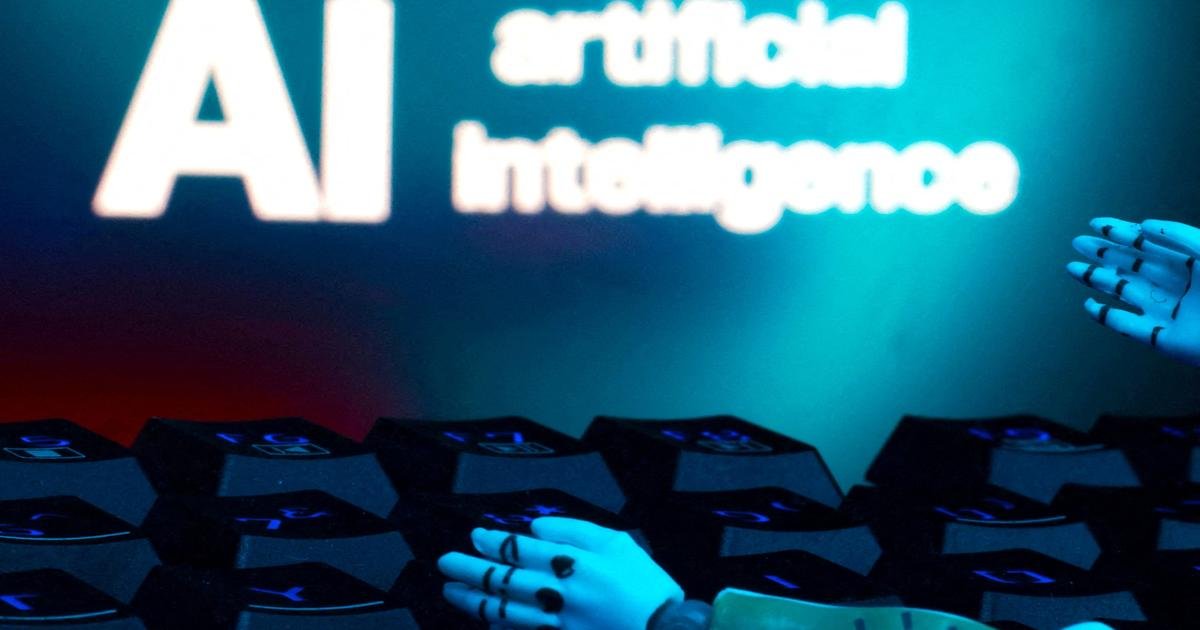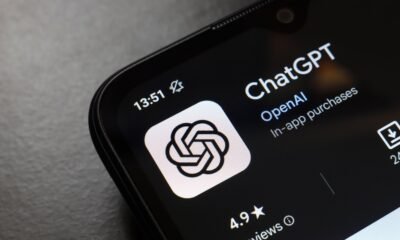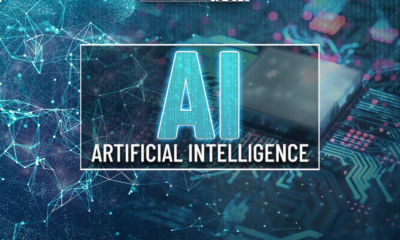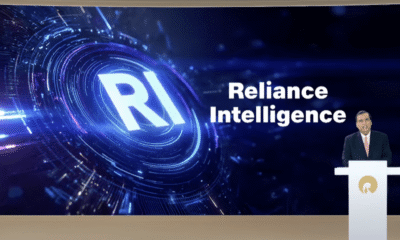AI Research
GSA introduces USAi.Gov to streamline AI adoption across government

The General Services Administration unveiled another major Trump administration initiative Thursday, launching USAi.Gov to serve as a centralized, secure and trustworthy generative artificial intelligence evaluation suite for federal agencies to explore, interact with and even adopt secure AI services.
GSA’s goal is to streamline government adoption of the emerging technology by offering AI products like chatbots, code generation, document summarization, large language models and other generative AI tools to agencies in a trusted environment.
The launch supports priorities called for in President Donald Trump’s AI Action Plan issued in July regarding the creation of an effort to accelerate AI adoption across government and develop an AI evaluation suite.
“USAi means more than access—it’s about delivering a competitive advantage to the American people,” GSA Deputy Administrator Stephen Ehikian said in a statement. “The launch of USAi shows how GSA is translating President Trump’s AI strategy into action and accelerating AI adoption across government. USAi will put mission-ready tools directly into the hands of agencies to modernize faster, boost security, and lead globally.”
At launch, USAi will include AI models from Anthropic, Google, Meta and OpenAI. GSA had considered including models from up to six other firms at launch, including AI21 Labs, Amazon, Cohere, Mistral AI, Stability AI and xAI, according to early demos viewed by Nextgov/FCW.
According to GSA, agencies will be able to “explore capabilities, measure performance and identify strengths and limitations across different AI systems,” empowering agencies to make informed decisions about the adoption, customization and integration of myriad AI tools. Agencies can use the shared services platform to efficiently test and evaluate emerging technologies in a secure, cloud-based environment that supports scalable solutions.
In other words, agencies now have a place to try these technologies before they buy them.
“USAi isn’t just another tool, it’s infrastructure for America’s AI future,” said GSA Chief Information Officer David Shive. “USAi helps the government cut costs, improve efficiency, and deliver better services to the public, while maintaining the trust and security the American people expect.”
Many of USAi.Gov’s relevant features adhere to key policy and security requirements issued by the Trump administration. Early demos of the platform featured centralized logging, bias evaluation and inventory support in line with the 2025 Office of Management and Budget AI Governance Memorandum, as well as guardrail enforcement compliant with the 2025 Executive Order on Trustworthy AI issued by Trump in June. The government-wide effort is also entirely compliant with evolving cloud security standards through the Federal Risk and Authorization Management Program, or FedRAMP, which was first launched in 2011.
Per GSA, USAi.Gov “further advances workforce readiness by providing dashboards and usage analytics that help agencies track performance, measure maturity, and guide adoption strategies. By offering a centralized environment for experimentation, the platform supports both workforce upskilling and agency-level digital transformation.”
“GSA is proud to be on the frontlines of delivering on President Trump’s call to accelerate AI adoption in government and help empower agencies to deliver enhanced services to the American public,” said FAS Commissioner Josh Gruenbaum. “USAi provides a secure and collaborative environment for government employees to explore cutting-edge AI models that will make day-to-day workflows more efficient and help discover innovative solutions prior to making procurement decisions.”
More momentum at GSA
USAi.Gov is the latest in a series of seismic efforts undertaken by GSA.
The agency has already secured multiple deals with major companies, including Google Public Sector, Adobe, Salesforce, Elastic, Oracle, Uber, IBM, Docusign, Amazon Web Services, OpenAI, Anthropic and Box. The resulting deals have ultimately discounted billions of dollars’ worth of software those companies provide government customers through the OneGov initiative, which essentially treats government customers as a single large purchaser. Much of the tech developed by those firms includes AI, cloud computing and emerging capabilities necessary for the administration of government in the modern age.
GSA has also undertaken an aggressive rewrite of Federal Acquisition Regulation rules and centralized approximately $400 billion worth of goods and services through the agency, using Trump’s April 15 executive action as marching orders. The agency is also considering moving the NASA SEWP and NIH contract vehicles under its management to further streamline acquisition operations. It’s also taken on an expansive review of dozens of consultancies and has doubled its number of FedRAMP authorizations over last year’s numbers, part of a major FedRAMP overhaul.
Per Ehikian, GSA itself is a regular consumer of AI, with more than half of its staff using internal AI tools daily.
The agency has accomplished this despite reductions in force, more than 2,100 GSA staff accepting deferred resignation offers and recent leadership changes. On Aug. 1, Trump nominated financial executive Edward Forst to be GSA’s administrator; Michael Rigas is currently serving as the agency’s acting administrator.
AI is all the rage in government
The federal government has generally increased the amount it spends each year on technology across civilian agencies and the Defense Department since 2015.
But studies indicate its investment in AI has rapidly outpaced traditional IT investments. A 2024 Brookings report examining federal contracting data found massive growth in AI spending from August 2022 to August 2023, with obligated funds increasing 150% in AI expenditures over various federal agencies. The potential value of contract awards during the same time increased an exponential 1,200%, from $355 million to $4.5 billion.
“Growth in private sector R&D has been at above 10% per year for a decade while the federal government has shown more modest growth over the last five years after a period of stagnation,” the report states. “However, the 1,200% one-year increase in AI potential value of awards of over $4.2 billion is indicative of a new imperative in government AI R&D leading to deployment.”
Even so, the federal government has had a difficult time tracking all its AI efforts. In a landmark Government Accountability Office audit in 2023, the watchdog found some 1,200 planned or operational AI use cases across agencies. Yet the report found the government, just like the private sector, struggles in even defining what AI is, and those complications are furthered by the mainstream introduction of large language models and generative AI tools.
“AI capabilities are rapidly evolving, but neither the scientific community nor industry agree on a common definition for these technologies. Even within the government, definitions vary,” the report said.
USAi.gov may address that problem.
”Because AI is both powerful and transformative and also challenging if not dangerous, the more transparency around it, the better,” said Stan Soloway, president and CEO of Celero Strategies and former defense acquisition official. “Trying to cleanly and quickly find how and where AI capabilities are being used across the government is very difficult. If GSA can help solve some of those problems, that is all to the good.”
USAi.Gov’s launch comes one month after the Defense Department issued contracts worth up to $200 million each to four companies: Anthropic, OpenAI, Google and xAI. Three of the companies’products and models will be found on the USAi platform, and in the past week, Anthropic and OpenAI agreed to provide their software to government agencies for nominal fees.
xAI, founded by billionaire and former Department of Government Efficiency leader Elon Musk, recently unveiled its new Grok for Government offering in a post on X. Very soon, the featured chatbot on the X social media platform could be put to use by federal employees to deliver citizen services.
The recent maneuvering by tech firms is an indication of how important AI and emerging technologies have become to federal agencies under Trump, who has vowed to keep the U.S. government ahead in the global AI race.
About those companies
Anthropic and OpenAI, well-known for their large language models, are relatively new to the government market but have both made major splashes. Direct competitors, both companies just won multi-million dollar defense contracts, are building out teams to hone in on public sector business and have large language models that are widely used by the public. Anthropic’s cloud partner of choice is Amazon Web Services; OpenAI’s primary cloud partner is Microsoft, but the company recently announced a partnership with competitor Google to beef up cloud computing capacity.
Meta, founded by billionaire Mark Zuckerberg, is no stranger to the public, due to its social media platform, but it is relatively new to serving government customers. In late 2024, the New York Times reported Meta began allowing federal agencies and select defense contractors, including Booz Allen Hamilton, Lockheed Martin and Palantir, to use its Llama AI models. It has since partnered with Anduril to develop the Army’s multibillion dollar Soldier-Borne Mission Command Next program, formerly called IVAS Next.
Google, meanwhile, is one of the largest tech firms in the world, and has been serving the U.S. government for many years, especially through its hyper-scale cloud computing business and Workspace suite. Google’s Vertex AI is among the most widely used platforms for building and deploying machine learning and other AI models on. In April, Google became the first tech firm to offer a significant government discount of its software, which the company estimated could save federal agencies as much as $2 billion over the next three years.
AI Research
2 Artificial Intelligence (AI) Stocks to Buy Before They Soar Under President Trump

Key Points
-
President Trump’s megabill kept the corporate tax rate at 21% and allows companies to deduct domestic research and development spending immediately.
-
Nvidia GPUs are the gold standard in AI infrastructure, and the company should benefit as autonomous robots and self-driving cars become more prevalent.
-
Meta Platforms is leaning on AI to boost engagement across its social media properties, and it recently introduced advertising on Threads and WhatsApp.
-
10 stocks we like better than Nvidia ›
President Donald Trump signed the One Big Beautiful Bill Act into law on July 4. The legislation is nearly 900 pages and includes a litany of provisions, but two in particular should benefit Nvidia (NASDAQ: NVDA) and Meta Platforms (NASDAQ: META).
- The bill made permanent the corporate income tax rate of 21% that had previously been a temporary level set as part of the 2017 Tax Cuts and Jobs Act (TCJA). Because the corporate tax rate will not return to its pre-TCJA level of 35%, companies won’t face downward pressure on their profit margins from higher taxes, so Nvidia and Meta should be able to keep heavily repurchasing their shares. Only two companies in the S&P 500 spent more on buybacks in the last 12 months.
- The bill repealed the rule requiring mandatory amortization of domestic research and development (R&D) spending, which means companies can immediately deduct those costs from their taxable income rather than gradually writing them off. So the tech giants’ aggressive investments in artificial intelligence (AI) product development will result in faster tax savings.
My reasoning as to why Nvidia and Meta Platforms will benefit from Trump’s megabill could be applied to several other companies as well. For instance, Apple and Alphabet spent more than those two on stock buybacks in the last 12 months. Nevertheless, I think Nvidia and Meta look like particularly compelling long-term investment ideas now.
Where to invest $1,000 right now? Our analyst team just revealed what they believe are the 10 best stocks to buy right now. Continue »
Image source: Getty Images.
1. Nvidia
Nvidia reported solid results for its fiscal 2026 second quarter, beating estimates on the top and bottom lines. Sales rose 56% to $46.7 billion in the period, which ended July 27, due to particularly strong growth in its data center and automotive segments, and non-GAAP earnings increased 54% to $1.05 per diluted share. CEO Jensen Huang noted extraordinary demand for the new Blackwell GPU, which he described as the platform at the center of the artificial intelligence (AI) race.
Nvidia’s hardware is likely to maintain its status as the gold standard in AI infrastructure as physical AI technologies like autonomous robots and self-driving vehicles become more common. The company not only designs data center GPUs and on-device processors to run AI workloads, but also provides pretrained models and software tools to streamline the AI development process.
“We build technology that almost every self-driving car company uses,” Huang told attendees at the company’s GTC conference earlier this year. For instance, Tesla uses Nvidia GPUs to train AI models for its full self-driving software. Alphabet’s Waymo and Amazon‘s Zoox use Nvidia hardware and software to train models in data centers, and also to power decision-making in robotaxis.
Another reason Nvidia stock could soar under Trump is his recent decision to reverse the export restrictions that prevented the company from selling its H20 GPU to buyers in China. The H20, built on the company’s last-generation Hopper architecture, is a less powerful variant of its popular H100. Trump has also said he may allow Nvidia to sell a scaled-back version of its newer Blackwell GPUs in China. The company has already designed a chip (the B30A) that may fit the bill, according to Reuters. But Huang says getting approval from Trump will take time.
The consensus outlook among Wall Street analysts is that Nvidia’s earnings will increase by 34% annually over the next three years. That makes its current valuation of 58 times earnings look fair. Having said that, the semiconductor industry is notoriously cyclical, so investors who buy Nvidia stock today should be prepared to hold on through some volatility.
2. Meta Platforms
Meta Platforms reported impressive second-quarter financial results that exceeded estimates on the top and bottom lines. Revenue increased 22% to $47.5 billion, operating margin expanded by 5 percentage points, and GAAP earnings jumped by 38% to $7.14 per diluted share.
Investors have good reason to expect that momentum will continue. Meta Platforms is the second-largest ad tech company in the world as measured by revenue. Ad tech spending is projected to increase at 14% annually through 2030, and Malik Ahmed Khan at Morningstar earlier this year wrote, “Meta is a digital advertising juggernaut poised to increase its market share.”
Why? Its ecosystem includes Facebook, Instagram, and WhatsApp, three of the four most popular social media networks in terms of monthly active users. In total, Meta’s platforms draw more than 3 billion people daily, which affords the company a deep understanding of consumer tastes. That alone makes it a compelling advertising partner.
However, Meta is using artificial intelligence to improve the user experience and boost engagement across its social media platforms. CEO Mark Zuckerberg told analysts on the second-quarter earnings call that time spent on Facebook increased 5% and time spent on Instagram increased 6% due to the advancements the company had made in its underlying recommendation systems.
Additionally, Meta has hitherto untapped monetization opportunities. It recently introduced advertising on Threads (a social media platform similar to X) and WhatsApp. The company has yet to articulate a monetization strategy for Meta AI, but the generative AI application has more than 1 billion monthly active users and could be a meaningful source of revenue in the future.
Wall Street analysts expect Meta Platform’s earnings to increase at a 17% annualized rate over the next three years. That makes its current valuation of 27 times earnings look quite reasonable. Investors with a three- to five-year time horizon should feel comfortable opening a small position in this stock today.
Should you invest $1,000 in Nvidia right now?
Before you buy stock in Nvidia, consider this:
The Motley Fool Stock Advisor analyst team just identified what they believe are the 10 best stocks for investors to buy now… and Nvidia wasn’t one of them. The 10 stocks that made the cut could produce monster returns in the coming years.
Consider when Netflix made this list on December 17, 2004… if you invested $1,000 at the time of our recommendation, you’d have $664,110!* Or when Nvidia made this list on April 15, 2005… if you invested $1,000 at the time of our recommendation, you’d have $1,104,355!*
Now, it’s worth noting Stock Advisor’s total average return is 1,069% — a market-crushing outperformance compared to 186% for the S&P 500. Don’t miss out on the latest top 10 list, available when you join Stock Advisor.
See the 10 stocks »
*Stock Advisor returns as of August 25, 2025
Trevor Jennewine has positions in Amazon, Nvidia, and Tesla. The Motley Fool has positions in and recommends Alphabet, Amazon, Apple, Meta Platforms, Nvidia, and Tesla. The Motley Fool has a disclosure policy.
Disclaimer: For information purposes only. Past performance is not indicative of future results.
AI Research
Intelligence is not artificial | The Catholic Register

On our Comment pages, Sr. Helena Burns issues a robust call for a return to “old school” means of acquiring, developing and retaining knowledge in the age of AI.
Traditionalist though she might be in many ways, however, Sr. Burns’ appeal is not simply to revive the alliterative formula of Readin’, Writin’ and Arithmetic. Rather, she urges a return to the lost arts of using libraries, taking notes, listening to wiser heads, and above all using our own brains rather than relying on the post in the machine to explain the world.
“We can rebuild a talking, thinking, literate, memorizing culture. But it’s a slow build. It always was, always will be, and it starts when you’re a kiddo. Children in school are now saying they don’t want to learn how to read and write because computers will do it for them. They don’t know that they’re surrendering their humanity,” she writes.
Advertisement
The good news is that the much-rumoured surrender seems to be much further off than predicted in the recent frenzy over ChatGPT and its cohorts purportedly being thisclose to taking over the world and doing everything from producing perfect sour grapes to writing editorials.
In facts, recent reports particularly in the financial press, suggest AI-mania is already plateauing, if not hitting a downward curve. That doesn’t mean it won’t still cause significant disruption in workplaces or in how we navigate the storm-tossed seas of daily life. It doesn’t mean we can simply shrug off the statistic Sr. Burns cites of a reported 47 per cent decline in neural engagement among those who relied on artificial intelligence to help complete an essay versus those who got ink under their fingernails.
But as techno journalist Asa Fitch reported last week, Meta Platforms has delayed rollout of its next AI iteration, Llama 4 Behemoth, because of engineering failures to significantly improve the previous model. Open AI, meanwhile, overhyped its follow up ChatGPT 5 and saw it effectively flatline in the market.
Business leaders, already sceptical of security and privacy concerns with AI, have hardly been reassured by the “tendency of even the best AI models to occasionally hallucinate wrong answers,” Fitch writes.
More critically, many businesses looking at the allure of AI don’t yet know, in very practical terms, what it can do for their particular sector. We tend to forget that from the “future is now” advent of the Internet, it took the better part of a decade before society began to appreciate its ubiquitous uses.
Advertisement
University of California, San Diego psychology professor Cory Miller points out there even more formidable barriers to broad AI adaptation. Not the least of such obstacles are the requirements for, as Miller says, “enormous hardware, constant access to vast training data, and unsustainable amounts of electrical power (emphasis added).”
How unsustainable? A human brain, Miller writes, “runs on 20 watts of power – less than a lightbulb.”
AI by contrast?
“To match the computational power of a single human brain, a leading AI system would require the same amount of energy that powers the entire city of Dallas. Let that sink in for a second. One lightbulb versus a city of 1.3 million people,” he says.
The comparison is arithmetically sobering. It’s also ultimately a hallelujah chorus to the glory of creation that is humankind. We exist in a culture awash – it often seems perversely pridefully – in self-underestimation and outright denigration. Oh, to deploy Hamlet’s immortal phrase, what a piece of work is man.
Without question, evil lurks in our darker corners and threatens to beset our best and brightest achievements. But achieve we do as we collectively engage the unique phenomenal 20-watt light bulb brains that are the universal gift from God, our Sovereign Lord and Creator.
In another column in our Comment section, Mary Marrocco illuminates the dynamic of that gift and that engagement, quoting St. Athanasius’ observation that “when we forgot to look up to God, God came down to the low place we’d fixed our gaze on.”
Advertisement
The outcome was the glorious rise of our Holy Mother the Church, whose cycle of liturgical years, year after year, reminds us of who we are, what we are, and to whom we truly belong.
There is not a shred of artificiality in the intelligence of the resulting library (biblio) of the Bible’s books, its Gospels, its Good News. There is only God’s Word, the most extraordinary conversation any child, any human being, could ever be invited to learn from
A version of this story appeared in the August 31, 2025, issue of The Catholic Register with the headline “Intelligence is not artificial“.
AI Research
Has artificial intelligence finally passed the Will Smith spaghetti test? – Sky News
-
Tools & Platforms3 weeks ago
Building Trust in Military AI Starts with Opening the Black Box – War on the Rocks
-

 Ethics & Policy1 month ago
Ethics & Policy1 month agoSDAIA Supports Saudi Arabia’s Leadership in Shaping Global AI Ethics, Policy, and Research – وكالة الأنباء السعودية
-

 Events & Conferences3 months ago
Events & Conferences3 months agoJourney to 1000 models: Scaling Instagram’s recommendation system
-

 Jobs & Careers2 months ago
Jobs & Careers2 months agoMumbai-based Perplexity Alternative Has 60k+ Users Without Funding
-

 Funding & Business2 months ago
Funding & Business2 months agoKayak and Expedia race to build AI travel agents that turn social posts into itineraries
-

 Education2 months ago
Education2 months agoVEX Robotics launches AI-powered classroom robotics system
-

 Podcasts & Talks2 months ago
Podcasts & Talks2 months agoHappy 4th of July! 🎆 Made with Veo 3 in Gemini
-

 Podcasts & Talks2 months ago
Podcasts & Talks2 months agoOpenAI 🤝 @teamganassi
-

 Jobs & Careers2 months ago
Jobs & Careers2 months agoAstrophel Aerospace Raises ₹6.84 Crore to Build Reusable Launch Vehicle
-

 Mergers & Acquisitions2 months ago
Mergers & Acquisitions2 months agoDonald Trump suggests US government review subsidies to Elon Musk’s companies






















